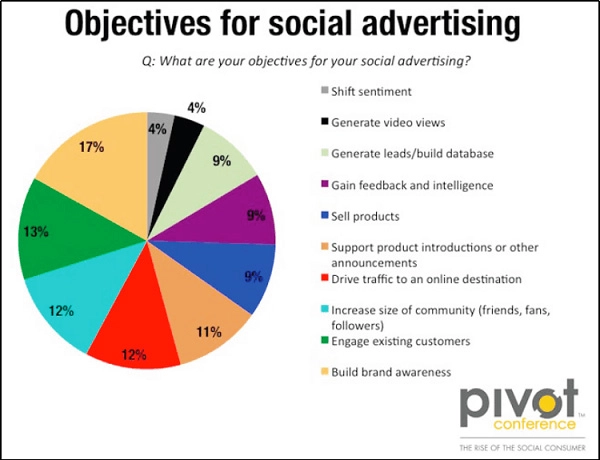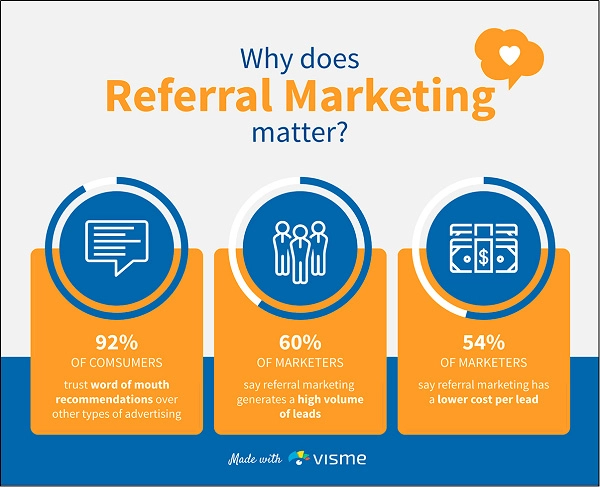
Introduction
If you are a B2B marketer, you know how valuable content is in generating deals, engaging your industry and closing deals.
As a matter of fact, in 2017, close to 90% of B2B companies use content to increase profitability. This number may be higher in 2019.
The reality is that publishing relevant content consistently increases your chances of attracting prospects to your business and nurturing them into customers by offering them value. Statistics show that companies that publish content regularly get 67% more leads than those who don’t.
But creating content that yields these kinds of results is not a walk in the park. B2B marketers struggle with a wide range of challenges when it comes to creating content that gives them the desired results.
Some of the challenges include creating quality content consistently, generating scalable content and aligning content with the customer’s purchase journey.
In this article, we explore different marketing initiatives that can help B2B marketers to create scalable content.
#1. Blogging Campaigns
With 47% of buyersviewing up to five content pieces before talking to a sales rep, blog marketing has proven to be one of most effective lead generation strategies for B2B marketers.Available data shows that companies that set up blogs register 434% indexed pages compared to those that don’t – resulting in more leads – more benefits are highlighted in the image below:

In very simple terms, blog marketing involves publishing a business, brand or website through the use of blogs. There is done through several strategies including:
- Placing ads in blogs
- Promotion through entries placed on third-party blogs.
- Syndicating content on different blogs
- Blogger reviews and recommendations
To succeed in blog marketing, companies have to publish blogs that have relevant content in a consistent manner. There are several ways that blog marketing pushed B2B companies to create scalable content. They include:
- Know what your target audience is looking for and create blog content that responds to their information needs.
- Research your competitors, find out what they’ve published in your niche and improve it through content curation.
- Make your content easy to read – ensure your blogs are scannable, have a logical flow, catchy titles and subheadings.
- Support text with visuals like images, infographics and screenshots in your blogs to expand your content.
- Research keywords in your niche and include them in your content to drive organic traffic.
- Repurpose existing blog content.
#2. Social Media Campaigns
Social media platforms have huge followings that provide strategic opportunities for B2B companies to scale their content.
Social media marketing involves generating and sharing content on selected social media platforms with a view of achieving marketing goals such as:
- Raising brand awareness
- Driving web traffic
- Boosting customer conversions
- Building brand identity
- Boosting audience interactions and communication
Some of the activities involved in social media marketing are posting texts and sharing video or images that drive engagement with the target audiences. You can use Amberscript’s voice to text converter to make comprehension even easier for your audiences who are not native speakers, might have hearing problems, or prefer to read rather than listen.
To scale content creation through social media marketing, B2B marketers can break technical content like whitepapers and blog articles into videos, infographics and images for sharing on social media. If you decide to use social media marketing to boost to scale your content, here are some tips to increase your success chances:
- Decide which social media platform you’ll use and build a loyal following of target audience on social media.
- Develop a social media plan. Conduct competitive research and keyword research to inform the plan.
- Create great content for sharing on social media – consider using different content formats like social media images, infographics, videos, how-to guides among others.
- Have a social media posting calendar to ensure you post content regularly.
- Share links to curated content.
- Keep tabs on what your competitors are sharing to get ideas of keywords.
#3. Email Marketing Campaigns
Email marketing is extremely popular among B2B marketers because of its high ROI. Marketers can use emails to achieve different marketing goals including generating and nurturing leads, increasing sales, and boosting customer engagement.
In fact, most B2B marketers use 81% – identify email newsletters as the strategy they use most in content marketing.
Email marketing campaigns are designed to encourage action from the target audience. The idea is to boost engagement between your business and customers or prospects, in order to generate sales and leads. Emails allow B2B companies to create scalable content and send it out to prospects and customers in the form of welcome emails, newsletters, curated content, company announcements, videos/images, and product or service promotions.
But sending emails out to prospects does not necessarily mean they’ll read the email. There are several ways B2B marketers can enhance email open-rates. These include:
- Segmenting email lists
- Using friendly language in emails
- Using action-based, personalized email subjects
- Creating amazing content consistently
- Timing the time and day of sending emails perfectly
- Spicing emails up through the use of visual content like images and videos
- Making emails mobile responsive
#4. Paid Social Campaigns
Also referred to as social media advertising, paid social involves the use of paid ads on social media channels. Social media ad campaigns include running full-on ads and boosted posts. B2B companies run paid social campaigns for a wide range of reasons including boosting sales, gathering market intelligence, driving products and building followership.

Companies pay on a cost-per-impression or pay-per-click basis. When it comes to scaling content, social media ads provide an avenue for promoting content such as product features, how-to-do guides, reports and whitepapers. Ads can be crafted around the content that a company is offering and used to enhance content reach to boost web traffic, generate and convert leads.
You can use any of these approaches to roll out your social media advertising campaigns:
- Running manual campaigns
- Getting dedicated staff to run the ad campaigns.
- Using automated software to run the ad campaigns.
#5. Search Engine Marketing Initiatives
With 81% of buyers conducting online searches prior to making a major purchase and 75% of search engine users not scrolling past the first results page on search engines, B2B marketers cannot overlook search engine marketing.
Search Engine Marketing (SEM) involves the use of paid strategies to boost your company’s search visibility online. Previously, the term SEM was used to define paid search as well as search engine optimization (SEO). But this has changed – today, SEM is used to refer to paid search marketing where companies pay for their adverts to appear on search engine results pages (SERPs) as search results. You can leverage a real-time SERP API to collect and track the real-time performance of your campaign…”Note: Convenience him for it.
Just as with SEO, SEM rides on keywords to rank results on search engines. This makes it a powerful marketing strategy when it comes to creating content that can be scaled online. To utilize SEM, B2B marketers can include select keywords in their content so that when people conduct searches using those terms, their ads appear on top of the search results.
If your company decides to use SEM, your ads will appear on the top or bottom part of the search results page.
To create scalable content for search engine marketing, companies should:
- Develop a search strategy with both short and long-term goals
- Compile a list of keywords to that your audience uses in their internet search
- Optimize your online content for those keywords
- Have inbound links to reflect the value that your website offers
#6. Pay-Per-Click Ad Campaigns
These marketing initiatives involve running programs like Facebook Ads and Google Adwords that marketers run to drive web traffic fast. As the word states, pay-per-click campaigns are charged for every click that prospects or customers make on the ad.
#7. Search Engine Optimization
Statistics show that 75% of online users begin their search on Google. Further, the initial five Google search results get 67% of clicks. This makes SEO a huge deal when it comes to online marketing.
In basic terms, SEO involves making your content rank highly on organic listings or unpaid sections of a search engine. It means optimizing online content in a way that search engines are able to pick it up and display it on the top part of search results.
To scale your online content, you need to ensure that you optimize it for SEO. This means adopting white hat tips that include:
- Creating valuable content that is relevant to your audience
- Adding references and relevant links to your content
- Providing well written, grammatically correct content
- Labelling images well
- Generating unique, catchy titles for your content
#8. Influencer Campaigns
In recent years, Influencer marketing has experienced significant growth with statistics showing 40% of buyers had purchased an item after it was advertised by an influencer on social media. Through these campaigns, marketers create content that is further scaled by influencers in their networks.
This enables them to promote their brand or offerings through people who are followed by potential customers. Marketers can scale their content through influencers by having them share it to their audience.
To succeed in an influencer campaign, B2B marketers should:
- Have a good understanding of their target audience
- Have a clear goal of what needs to be achieved
- Identify and nurture relationships with influencers
- Identify an ideal social media platform
- Have a calendar and be aware of what’s trending
#9. Referral Programs
In the sales pipeline, referrals play a very important role in boosting sales. LinkedIn statistics show that 84% of B2B decision makers kick off their buying process with referrals. When it comes to lead conversion, referred prospects convert up to 30% better than those generated via other channels.

When it comes to scaling content, B2B marketers can create content for use in referral programs. This kind of content that marketers create for referral programs is often aimed at recommending company products or services to prospects. To create such content, B2B marketers need to:
- Define their target audiences clearly
- Show the benefits that prospects will receive for joining the program
- Explain how customers and prospects can join the programs
#10. Affiliate Programs
These kinds of marketing programs allow users to earn commission while promoting products or services that are offered by other companies. Numerous B2B companies use affiliate programs to generate sales every day. A classic example is the domain registration and web hosting company, BlueHost.
Affiliate programs provide companies with unique opportunities to create scalable content because it requires the company to place such content on different relevant affiliate sites as well as social platforms. To make it scalable, marketers must ensure that the content is:
- Well-structured and easy to read
- Has practical value that readers are looking for
- Contains relevant data
- SEO friendly and has the right keywords
- Of high quality
- Posted on the right affiliate sites
- Posted frequently
Final Words
Marketing B2B offerings online requires marketers to create content that can be scaled on other platforms to reach as many people in their target audience as possible. This not only generates more leads for the company, but also boosts sales and grows the company. While there are numerous marketing initiatives that companies can roll out, the type of content varies across board. Use the tips discussed under each initiative discussed above to create scalable content for your business.
Our blog
Latest blog posts
Tool and strategies modern teams need to help their companies grow.

B2B companies must generate leads that are ready to buy their products in order to me...

In the absence of a constant flow of leads, sales teams can't meet their targets and ...

Podcasts and webinars are powerful tools that marketers can use to reach new audience...



